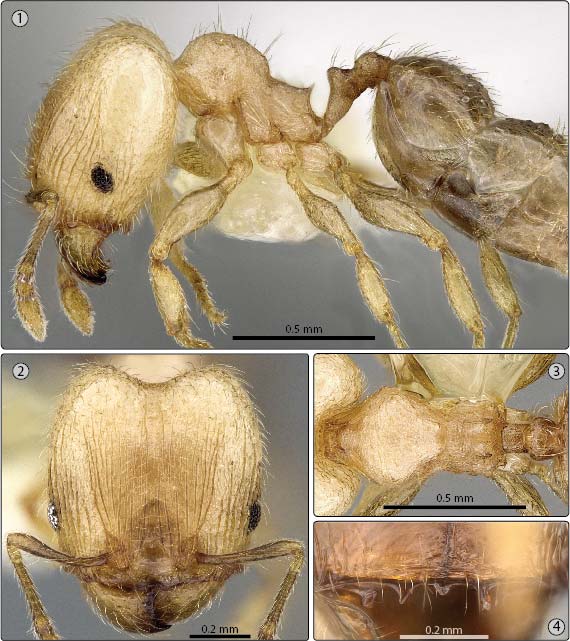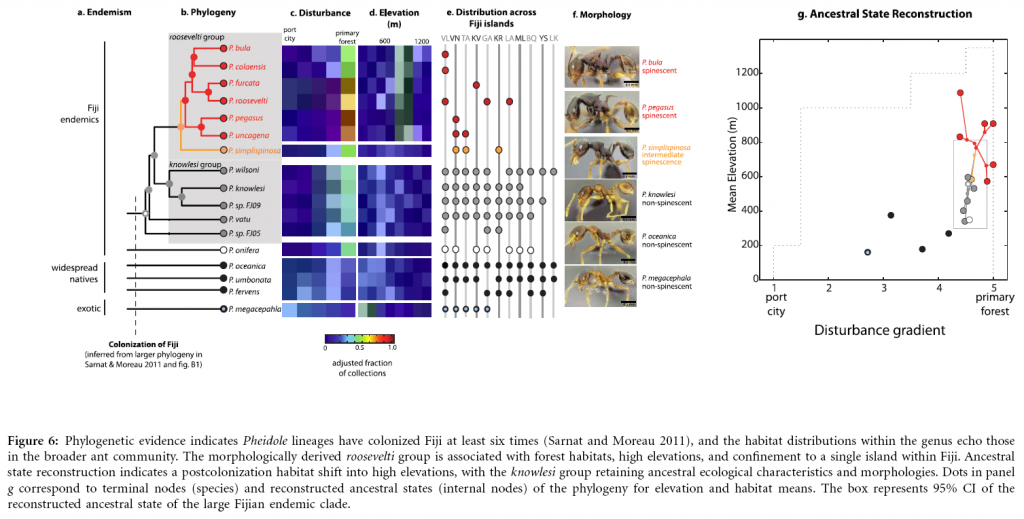Here’s the story behind the new Bioinvasions Records article on that just came out. Christian Rabeling and Ed Wilson went to Vanuatu a few years back in 2011 because it was one of the few Melanesian islands that Wilson had never collected from. They collected all the ants they could find in a general survey and kindly sent their Pheidole to the Economo lab at OIST so that I could match them against our other Pacific Pheidole collections and Evan could include them in our phylogenetic analysis. Christian and Ev caught some great Pheidole from the island, including this beautifully spinescent endemic from the sexspinosa complex shown below (CASENT0282641).

An elegant Vanuatu endemic ant species (Pheidole epem198, CASENT0282641) from the Pheidole sexspinosa complex
But one species came out in an unexpected branch on the phylogeny. Instead of coming out with the Old World clade with all the other native Melanesian ants, this one species was reliably nested within the New World clade. It’s closest relatives on the tree were two species that had been included in Corrie Moreau’s 2008 Pheidole phylogeny and id’d as P. moerens and P. flavens–both of which are considered to be invasive.

Major worker of a species from the Pheidole flavens-complex from Espiritu Santo, Vanuatu; collection code CR111110-15, specimen code CASENT0248836. (1) Lateral view, (2) fullface view, (3) dorsal view, (4) hypostomal bridge.

Minor worker of a species from the Pheidole flavens-complex from Espiritu Santo, Vanuatu; collection code CR111110-15, specimen code CASENT0248835. (5) Lateral view, (6) fullface view, (7) dorsal view
We wanted to let other researchers know about the spread of this trampy species into the Pacific, so we wrote up a rapid communication article for Bioinvasions Records. The idea was to get the basic information about the new discovery out as quickly as possible, so others in the region could be on the lookout for additional incursions.
The most frustrating part of this study was trying to get a name on the species. Unfortunately, the taxonomy of P. flavens and its close relatives like P. moerens and P. exigua is a super sticky mess, rife with infra-specific names, lost holotypes, and inaccurate determinations. It seems like these taxonomic morasses plague trampy species (like P. flavens and friends) much more often than your average ant species.
Why is it that trampy species so often belong to species-complexes? What are species-complexes, anyways? I suppose I’d define them as geographically distinct populations that are somewhere on the continuum of streching from a recently coalesced species radiation on one end to a network of geographically isolated groups with some low amount of gene flow still persisting. For the taxonomist or even the molecular systematist there is no clear way to know whether to call these things five geographically isolated species or one widespread species.
Whatever the population on Vanuatu turns out to be, it doesn’t match the neotype of P. flavens or the syntypes of P. moerens, so for now we have to settle for calling it a member of the flavens-complex and hope that someone tries to untangle this taxonomic knot in the near future.
EM Sarnat, C Rabeling, EP Economo & EO Wilson (2014) First record of a species from the New World Pheidole flavens-complex (Hymenoptera: Formicidae) introduced to the southwestern Pacific. Bioinvasions Records 3: 301-307. | PDF








